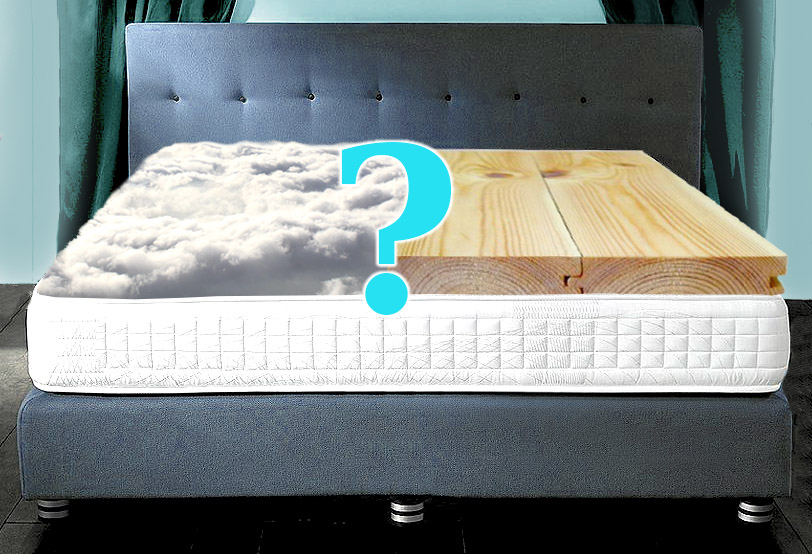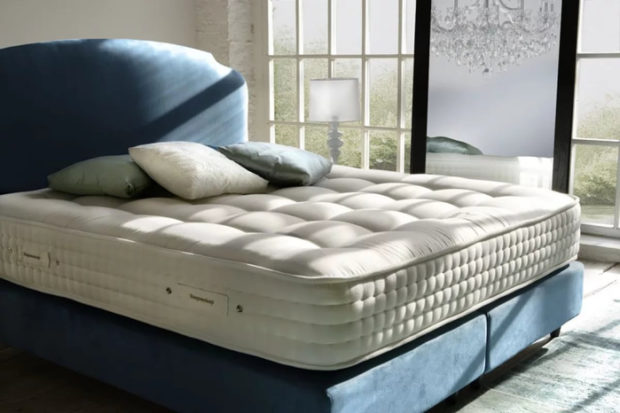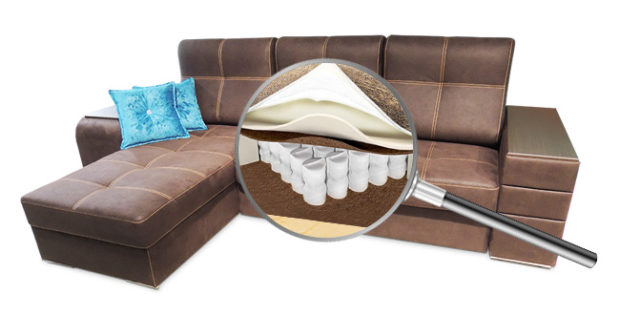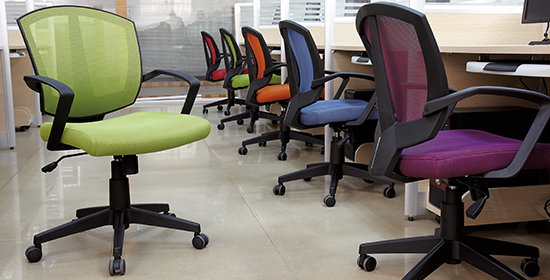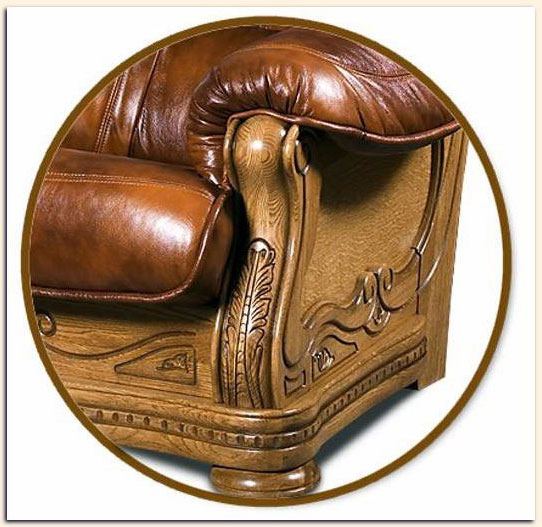5 tips for choosing a pillow for sleeping
Recently, a lot of attention has been paid the right choice of mattress. This is undoubtedly very good. The only bad thing is that many forget to ask how to choose a pillow for sleeping. In the store, we superficially evaluate several attractive models and choose the one that the inner voice will point to, and it is often driven by our desire to save. Is this the right approach? Not really, because with an improperly selected pillow, the properties of even the highest quality and the right mattress will appear only 80%. The result of regular sleep on the wrong pillow is pain in the neck and back, headaches and allergies. What parameters are important to pay attention to first of all?
Types and shapes of pillows
From the previously used square pillows, we gradually switched to rectangular ones, and then to orthopedic ones. It does not bother to deal with the features of each type and form.
Pillows for sleeping can be divided into two groups:
- classic
- orthopedic.
Classic pillow familiar to everyone since childhood. Were previously distributed square pillows measuring 70 * 70 cm and children's 50 * 50 cm. Now, more than half of buyers choose pillows Euro size - 70 * 50 cm and 60 * 40 cm for adults and children's products, respectively. How to explain such popularity? Firstly, a person in a dream moves horizontally, and not from top to bottom. Secondly, for a pillow 70 * 50 cm less filler is needed, which affects the price. Thirdly, most manufacturers of bedding complete sets with rectangular pillowcases.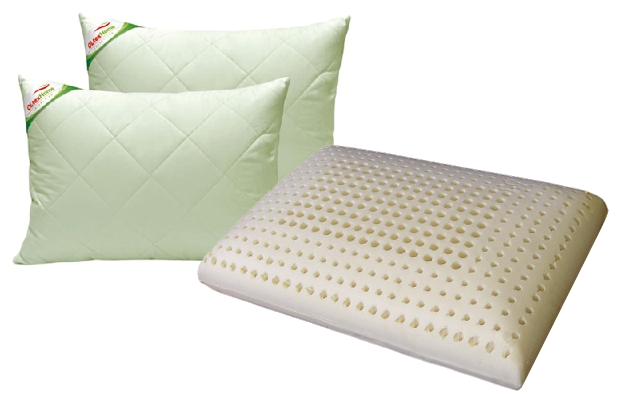
Orthopedic pillows provide reliable head support and are necessary for problems with the spine. Such products are in the form of a roller or a rectangle with a recess in the center to ensure the optimal position of the head and neck during rest. Orthopedic pillows for sleeping are made of several layers of a special filler (latex, memorform, polyurethane foam), which remembers the position of the head and neck. Only one layer of regular filler is used in fakes, as in classic pillows, so you should be extremely careful when buying.
These products are recommended for use by people with problems of the musculoskeletal system, including suffering from osteochondrosis, chronic pain in the cervical spine, torticollis, increased muscle tone, as well as injuries and displacement of the vertebrae. Consensus Is it worth it to use orthopedic pillows for everyone, without exception, does not exist. Official medicine says that there should be no harm, but common sense suggests that if there are no health problems, then you can choose a classic, but high-quality, pillow - it will be cheaper, but no less comfortable.
The disadvantage of an orthopedic pillow is the need to get used to its shape, increased rigidity, solid and high side.
Can I sleep without a pillow? Better not, since over time from such rest the cervical spine will begin to bend, causing pain and other unpleasant consequences.

Pillow height
If the sizes of pillows for sleeping are more or less standard, then the height can vary significantly. When choosing, take into account the features of the physique of the sleeping person and preferred postures for sleeping:
- if you usually sleep on your side, then the height of the pillow should correspond to the width of the shoulder. Measure the distance from the base of the neck to the shoulder point.Fans of this dream will be comfortable on pillows 10-14 cm high;
- for lovers of sleeping on their backs you need a lower pillow - 8-10 cm. However, if you often roll over from side to back, then take a product 10-13 cm high;
- those who are more used to sleeping on their stomach, fit the lowest pillows - 6-8 cm;
- if in a dream you constantly roll over, it’s better to take a pillow of medium height and try to lie on it in different poses while still in the store;
- than softer mattress, the lower the pillow should be;
- lower pillows are generally suitable for women than for men.

Pillow stiffness
The stiffness of the pillow for sleeping is also selected depending on the preferred posture during rest:
- hard pillows Suitable for lovers to sleep on their sides, because they especially need good support for the head and neck. Such products are recommended for people with problems of the musculoskeletal system;
- semi-rigid pillows - A great option for those who sleep on their backs;
- soft pillows it is better to choose for those who spend a lot of time in a dream on their stomach.
Rigidity depends on the filler. To make the pillow stiffer, horsehair, latex and some synthetic fillers are used to provide softness, fluff, feather and synthetic winterizer are used. In medium-hard pillows, several fillers are combined, and sometimes buckwheat is used.
Type of pillow filler
It's time to figure out which pillow filler is better. The degree of rigidity, the ability to support the head and neck, as well as the durability and risk of allergies, depend on it. There are a lot of options, but for convenience we will divide all materials into natural and synthetic.
Natural fillers
The most popular natural fillers:
- fluff and feather until recently, were the only filler option. The material passes air well, absorbs moisture, therefore regulate heat transfer. Commonly used are swans, goose, duck and chicken down and feathers. In more modern pillows, the filler can be multi-layered, for example, in the middle - down and feather, and outside - only down for better depreciation. The filler can be spread out in separate pockets so that even after wet processing the product can be given the desired shape. Feather and down pillows should be looked after, regularly dried and disinfected, otherwise dust mites will start inside, and their feces can cause allergies. But even with constant care, durability is not high;
- sheep and camel hair filler conducts air well, absorbs sweat, maintains normal body temperature. Overly soft pillows are made from sheep's wool, but they have a therapeutic effect for colds and migraines. But! An allergy is possible on wool. Poor quality filler rolls into lumps, and care for such a pillow will be difficult - you can’t wash it in the machine;
- horsehair rarely used, has high rigidity, often mixed with other fillers to absorb stiffness of the pillow. The material perfectly retains its shape, repels moisture and dust, lasts at least 10 years, is often used in orthopedic pillows;
- bamboo fiber does not cause allergies, breathes, conducts air, can be machine washed. The material has medium rigidity, gives good support to the head and neck, does not stray into lumps. Bamboo easily absorbs moisture and gives it away easily, but if the humidity in the room is high, the balance is disturbed, and the product quickly deteriorates. Of the minuses, only the cost;
- natural latex produced from hevea juice. A hypoallergenic material comes out that easily takes the shape of the head and neck, and then is restored. The life of the pillow is up to 20 years, but the price is high;
- buckwheat husk pre-treated with steam, as a result, a hypoallergenic filler is obtained, in which dust mites do not start.Buckwheat flakes cling to each other and, with constant use, “remember” the shape of the head. Service life - 2-4 years;
- herbal pillows They smell good, have a good effect on human health and sleep. As a filler, hop cones, lemon balm, mint, rosemary, sage, kelp, ivan tea and cattail are used. To give the product rigidity, add straw, heather or sedge. Shake the pillow regularly. Service life is about 3 months. The filler from the needles will last up to 12 months. Have to put up with the characteristic rustling during sleep;
- silk - expensive, but very durable filler (lasts up to 10 years). It does not slip, does not smell, does not cause allergies, mites and mold do not live in it;
- cotton - ordinary cotton wool, has sufficient softness. There are many disadvantages: the filler quickly rolls up, loses its shape, parasites like to live in it, and you can’t wash such a pillow. It is hardly enough for 1-2 years.

Synthetic fillers
Synthetic fillers are cheaper, do not cause allergies and easier to care, the most popular include:
- polyester - cheap material, repels dust, but cakes over time, becomes flat, and threads begin to stick out from the seams. A good option for a summer residence;
- synthetic winterizer it is also inexpensive, does not absorb odors, tolerates machine wash, but over time you will notice a bulging place from the head on the pillow, so you can’t call it a durable product;
- holofiber - This is the same polyester, but its fibers are twisted into balls, fixed with silicone, in the end, to get a more durable material. The filler does not cake for a long time, can be machine-washed;
- silicone - polyester in the form of hollow fibers, soft and elastic, allows air to pass through, is easy to wash, is inexpensive, but not very durable;
- tinsulate - polyester fiber twisted in a spiral and coated with silicone. It is easily erased, serves not less than 5 years, ticks do not start in it. Minus - the filler can electrify hair;
- foam or "memorial form" - an elastic filler that preserves the shape of the head, is not attractive to ticks and mold, lasts at least 10 years, is used in orthopedic pillows. Minus - the cost;
- microfibre - a substitute for natural fluff. The filler is light enough, durable, does not absorb odors, is easy to care for, but is electrified and does not absorb water well, lasts about 5 years;
- microgel - An analogue of fluff, lightweight, hygroscopic, it can be washed at home and does not cause allergies. Such pillows are expensive, but they last up to 10 years;
- viscoelastic - porous filler, easily taking the shape of a head. You can’t wash it, its durability is about a dozen years.

What else to consider when choosing?
After studying the above characteristics, making the right purchase will be easier. However, to accurately answer your question, what pillow to choose for sleep, you need to pay attention to some little things:
- after pressing, the shape of the pillow should be easily restored;
- the filler should be distributed evenly, without pits and tubercles;
- the pillow should not emit a sharp chemical smell;
- the cover should be made of cotton or silk, sewn with small stitches, not have protruding threads;
- preference for pillows with a cover with a zipper. Extra filler can be pulled out of them, caring for them is easier;
- with low blood pressure, it is better to choose softer pillows and vice versa;
- for pregnant women there are special pillows 170-190 cm long that help to take the most comfortable position. Newborns do not need a pillow at all;
- the label should contain complete information about the product - composition, manufacturer, care, etc .;
- the name of the manufacturer will say a lot. Among the verified we note Christian Fischbacher (Switzerland), Hefel (Austria), Kaufmann (Austria) - this is a luxury segment. In the middle segment stand out Askona (Russia), Le Vele (Turkey), English Home (England), Sonex (Ukraine). Pillows TAC (Turkey), Ikea (Sweden), Crystal (Turkey), Serafimovskaya fluff (Russia) are inexpensive, but they serve well.Read the information on the Internet about the selected manufacturer.
If possible, lie down on a pillow before buying.





